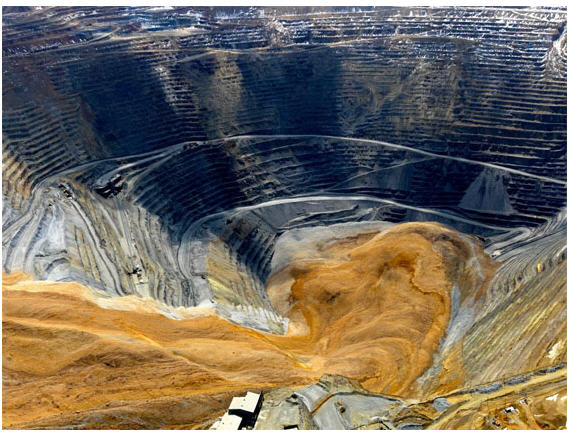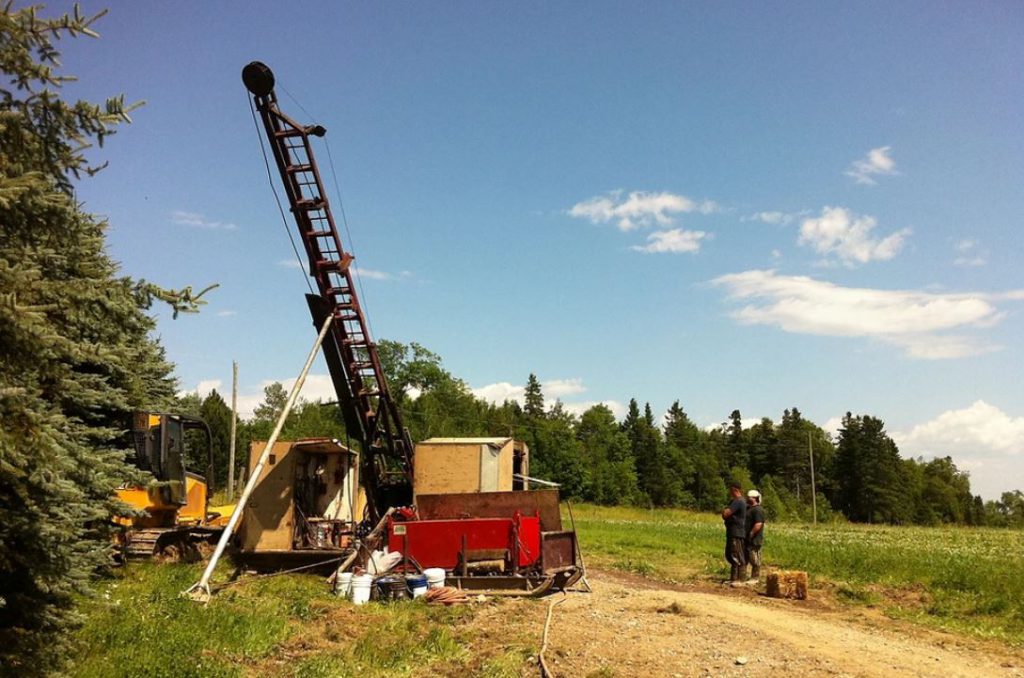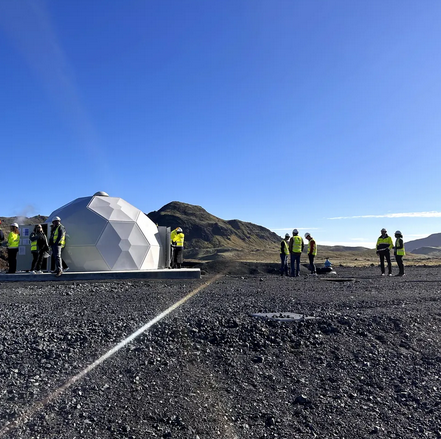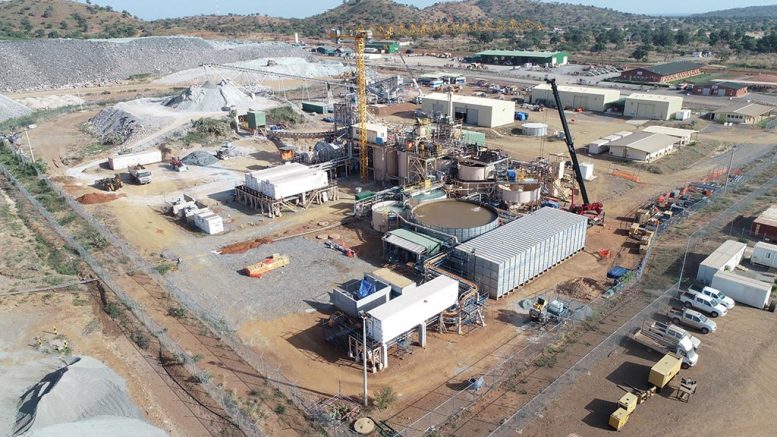Tips for diversifying beyond gold
 Last month’s landslide at Utah’s Bingham Canyon, one of the world’s largest copper mines, triggered significant discussion on possible copper shortages. Brent Cook, veteran geologist and publisher of Exploration Insights, puts the landslide into perspective in this interview with The Metals Report. And for investors who want to dig out profit potential beyond the yellow metal, Cook gives us a byproduct primer and suggests base metals are a great way to diversify.
Last month’s landslide at Utah’s Bingham Canyon, one of the world’s largest copper mines, triggered significant discussion on possible copper shortages. Brent Cook, veteran geologist and publisher of Exploration Insights, puts the landslide into perspective in this interview with The Metals Report. And for investors who want to dig out profit potential beyond the yellow metal, Cook gives us a byproduct primer and suggests base metals are a great way to diversify.
The Metals Report: In April, a landslide shut down operations at one of the largest copper mines in the world, Rio Tinto Plc’s (RIO:NYSE; RIO:ASX; RIO:LSE; RTPPF:OTCPK) Bingham Canyon mine. Thankfully, no one was injured. Are landslides always a threat at large, open-pit mines? Will this change the standards for how mines are built and their size?
Brent Cook: Landslides and rock falls are always an issue in open pits, and companies put a lot of effort into understanding the rock mechanics in order to build these mines and pits properly. They generally are not a major problem if sufficient upfront studies are done. The Bingham pit was opened in the early 1900s and has been expanding since then. While the slide is a major event, I do not think it will change how anyone builds mines per se.
TMR: Rio Tinto was looking at another expansion there. Will this make it tougher for that mine, or another of similar size, to expand?
BC: What happened at Bingham should not affect other mines of that size. I imagine the company is going through a lot of engineering analysis and trade-off studies to figure out what exactly it has to do at Bingham this year and over the next decade.
As you can see from the photo [below], this was a major landslide. I’ve worked at Bingham, so I know it real well. The mine produces about 400,000 ounces of gold and 430,000 tons of copper annually but I would guess there’s enough ore stockpiled to last several weeks.
Photo by Kennecott Utah Copper
The slide represents close to 165 million tons (165 Mt) of rock that will need to be moved out eventually—the equivalent of moving a whole mine. Kennecott hasn’t released specific plans so I don’t know how much, if any, of the slide material would go to the ore pile versus waste. As I recall, the company had plans to go underground.
TMR: You think it will go underground instead of expanding the open pit?
BC: No, the underground mine was to be sequenced in and the open pit continued or expanded. But now that has to be one of the options being considered.
TMR: I understand that mine produced 25% of U.S. total supply. How will that affect the copper market dynamics?
BC: Not all that much, really. There is a lot of copper sitting in Chinese and London Metal Exchange warehouses. In terms of the global copper market, this mine represents only about 1%, but close to 25% of the U.S. market.
TMR: Copper is considered an economic indicator. Is the fact that prices have dropped from $3.70/pound ($3.70lb) in January to $3.10/lb in April an indicator that the world’s economies are not recovering? Or is there just too much copper in the market right now, sitting in warehouses as you mentioned?
BC: That is a tough call. Copper has always been considered an indicator of future economic stability and growth. But in the past decade, speculators have taken heavily to buying and selling copper. I don’t think anyone really knows how much copper is being hoarded in China as an investment, or for pure speculation. I have seen photos published by Standard Chartered Bank showing copper overflowing warehouses and filling parking lots. I think power consumption is probably a better indicator of economics these days than copper, but we will see.
TMR: Do you predict copper will stay in that $3.10/lb to $3.70/lb range for the near to long term?
BC: I do not really like to make those sorts of predictions because I am relying on data of varying quality published by people with a variety of agendas. I suppose I have a 50/50 chance of getting the direction right, but I still seem to miss more often than I should. In my mine models, I am keeping copper at a steady $3/lb. I see my job as laying out the technical data as best I can and leave it at that; I prefer to let my subscribers plug in their own optimistic or pessimistic numbers based on how they see the future.
Predicting short-term copper demand versus supply is only useful for long-term investors in this sector to the degree that it points out mispriced equities. You really need to consider what demand will be 2, 5, 10 or 20 years out. That is because it takes at least seven and upwards of 20 years to find and bring a new copper mine into production. I base my investments on what is happening further down the line, which, hopefully, allows me to recognize underpriced assets.
TMR: Does it cost more to mine copper now, as the easy copper is going away?
BC: Operating costs are going up considerably. I am not sure of the average production cost of copper, but I would assume it is in the $2–2.50/lb range.
TMR: All-in costs?
BC: Yes, all-in costs. If the copper price started dropping below $2.75 or $2.50/lb, a lot of miners would be in big trouble because operating costs will exceed the price they can get. That would take a lot of copper offline. That built-in mechanism of price support will eventually kick in.
When looking at the copper price, supply and demand, you really must consider the time it takes to bring a large mine into production, the very high capital expenditures, and the real likelihood that a number of projects in the works will not get built. I think in the long term, we are facing a supply shortage.
TMR: Because copper is often a byproduct of gold mining, sometimes companies will mine copper whether the supply-demand equation is there or not. How does a polymetallic ore change the prospects for projects?
BC: More often than not, one of the byproducts of a copper mine is gold. A good copper mine like Bingham produces 0.4 Moz gold as a byproduct and somewhere near 3 Moz silver annually. Those are economically important byproducts of the copper mine. When you are evaluating the economics of a porphyry copper deposit, the price of those two metals enters into the equation. It is very important.
Likewise, in a polymetallic metals deposit, copper, lead, zinc, gold and silver all flow into the stream. It takes different processing methods to recover those. With most types of polymetallic deposits, miners produce a few different concentrates and send them off to a smelter.
In a pure gold mine, miners just produce gold doré. You do not have to worry about anything else. Well, actually you have to worry about everything else, but at least there is only one metal produced.
TMR: Does how a mine is labeled (gold with copper credit or copper with gold credit) depend more on the makeup of the ore body or how the company wants to market the mine?
BC: When you are looking at a base metal deposit like a porphyry copper deposit or a volcanogenic massive sulphide deposit (VMS), the gold and silver are generally byproducts. The degree to which they factor into an economic valuation depends on the grade and recovery as well as the ultimate value they add to the operation. It depends on the deposit itself what the important metal is.
Typically, with a silver deposit, miners will recover lead and zinc as well, both important byproducts that can often account for half the value received from the sale of concentrate. Pure silver deposits are fairly rare.
TMR: Which polymetallic projects are you following? How are they making the most of all of the pieces of their projects?
BC: One is MAG Silver Corp. (MAG:TSX; MVG:NYSE). Its Juanicipio deposit in Mexico is mostly a silver deposit, averaging 600 grams per ton (600 g/t) silver. It also contains economically important levels of lead, zinc and gold that will factor heavily into the ultimate economics of the mine. Its Cinco de Mayo deposit is a true polymetallic deposit.
A company in Colombia called Atico Mining Corp. (ATY:TSX.; ATCMF:OTCBB) has a gold-rich VMS deposit. The gold will be approximately 40% of the total revenue; the rest being copper with some lead, zinc and silver.
TMR: MAG Silver just released its annual report. Were you happy with what you saw?
BC: There was not much in the way of results, but I do like the deposit. The Juanicipio property hosts one of the best silver discoveries over the past 10–20 years. Its joint venture partner, Fresnillo Plc (FRES:LSE), is in charge of bringing this on-line. Fresnillo is the operator; it is putting in a tunnel and conducting a lot of geotechnical studies. It is exploring and going through the permitting process. Things are happening, just not very exciting things.
TMR: One name in your portfolio is Almaden Minerals Ltd. (AMM:TSX; AAU:NYSE). What do you like there, and what do you think of its recent results from the main Ixtaca zone?
BC: The Ixtaca deposit is a gold-silver deposit, about 50/50. It has a resource of a little over 3 Moz, at better than 1 g/t gold equivalent.
We have known this company and its management a long time; a great company, great guys. When I visited the Ixtaca property after the first drill hole, I recognized it as a major mineral system with a lot of potential. I still believe there is more than the 3 Moz found so far. I think there is more high-grade mineralization that is yet to be intersected in the current resource or elsewhere on the property. I hope Almaden will be able to find it over the next 12 months or so.
TMR: Do you own base metals because of your confidence in the global economy, to diversify, or because you just like the project regardless of the metal involved?
BC: A little of all three. Coming into 2013, I was negative on the gold price and wanted to diversify. So we bought Alderon Iron Ore Corp. (ADV:TSX; AXX:NYSE.MKT), which has an iron ore deposit in Labrador. It is well located, has good infrastructure and a Chinese partner. The feasibility study points to this deposit being worth well over $3 billion. The company is selling for $150 million now. We bought it because I think it is probably the best, undeveloped iron deposit in North America and maybe the world. And it has a partner. In that case, I was trying to diversify out of holding so much gold.
We also bought Fission Energy Corp. (FCU:TSX.V; FSSIF:OTCQX) when it released a drill hole into its R390 East discovery. That made me realize that it could be onto a major uranium discovery. With that, we got about 0.33 shares of Denison Mines Corp. (DML:TSX; DNN:NYSE.MKT) per Fission share, in the Athabasca, again to diversify somewhat out of gold. We got two uranium plays out of that initial purchase. Denison is a likely acquisition target because of where it sits in the basin. Fission is on to the most exciting uranium discovery to come around in quite a while.
TMR: Iron ore, uranium, copper. What else are you using to diversify your portfolio?
BC: At the end of 2012, we bought a company called Synodon Inc. (SYD:TSX.V), which has nothing to do with minerals. It is a tiny company that has developed a proprietary technology to detect gas leaks from pipelines and such from the air. If this works—and it does—once the company starts lining up contracts, it will be a huge money-maker.
As diversification out of minerals, Synodon was an obvious choice. Gas-leak detection is a rapidly growing global business that both regulators and pipeline companies are pushing. Flying the length of a pipeline with a helicopter is a lot more efficient than some guy walking through the bush with a hand-held instrument.
BC: The last one is Westshore Terminals (WTE:TSX), a pure play on the commodities being shipped from Canada to China, and we pick up a dividend on the way.
TMR: There are lots of oil transportation companies, why did you choose Westshore?
BC: It pays a good dividend. It is in a real easy business: taking stuff off trains and sticking it on a boat. I like the simplicity.
TMR: Do you have any final advice on investing outside of gold for people looking to protect themselves?
BC: In the mining and exploration sector, it is really important to know what you are buying, why you are buying it and what your expectations are. Then, you have to keep track of whether your expectations are met or not. If they are not met, it is time to sell. Too many people hold on and their investment thesis turns to hope, just hoping something good will happen so the share price goes up. That has never worked for me.
TMR: That sounds like great advice, Brent. Thanks for your time and your insights.
Brent Cook brings more than 30 years of experience to his role as a geologist, consultant and investment adviser. His knowledge spans all areas of the mining business, from the conceptual stage through detailed technical and financial modeling related to mine development and production. Cook’s weekly Exploration Insights newsletter focuses on early discovery, high-reward opportunities, primarily among junior mining and exploration companies.
Want to read more Metals Report interviews like this? Sign up for our free e-newsletter, and you’ll learn when new articles have been published. To see a list of recent interviews with industry analysts and commentators, visit our Metals Report homepage.
DISCLOSURE:
1) JT Long conducted this interview for The Metals Report and provides services to The Metals Reportas an employee. She or her family own shares of the following companies mentioned in this interview: None.
2) The following companies mentioned in the interview are sponsors of The Metals Report: MAG Silver Corp., Atico Mining Corp. and Almaden Minerals Ltd. Fission Uranium Corp. is a sponsor of The Energy Report. Streetwise Reports does not accept stock in exchange for its services or as sponsorship payment.
3) Brent Cook: I or my family own shares of the following companies mentioned in this interview: Fission Uranium Corp., MAG Silver Corp., Almaden Minerals Ltd., Alderon Iron Ore Corp., Denison Mines Corp. and Synodon Inc. I personally am or my family is paid by the following companies mentioned in this interview: None. My company has a financial relationship with the following companies mentioned in this interview: None. I was not paid by Streetwise Reports for participating in this interview. Comments and opinions expressed are my own comments and opinions. I had the opportunity to review the interview for accuracy as of the date of the interview and am responsible for the content of the interview.
4) Interviews are edited for clarity. Streetwise Reports does not make editorial comments or change experts’ statements without their consent.
5) The interview does not constitute investment advice. Each reader is encouraged to consult with his or her individual financial professional and any action a reader takes as a result of information presented here is his or her own responsibility. By opening this page, each reader accepts and agrees to Streetwise Reports’ terms of use and full legal disclaimer.
6) From time to time, Streetwise Reports LLC and its directors, officers, employees or members of their families, as well as persons interviewed for articles and interviews on the site, may have a long or short position in securities mentioned and may make purchases and/or sales of those securities in the open market or otherwise.
Streetwise – The Gold Report is Copyright © 2013 by Streetwise Reports LLC. All rights are reserved. Streetwise Reports LLC hereby grants an unrestricted license to use or disseminate this copyrighted material (i) only in whole (and always including this disclaimer), but (ii) never in part.
Streetwise Reports LLC does not guarantee the accuracy or thoroughness of the information reported.
Source: JT Long
More News
Manganese X poised to begin pre-feasibility study at Battery Hill
April 11, 2025 | 02:39 pm
Carbon removal technologies could create tens of thousands of US mining and quarry jobs – report
April 11, 2025 | 01:33 pm
{{ commodity.name }}
{{ post.title }}
{{ post.date }}





Comments